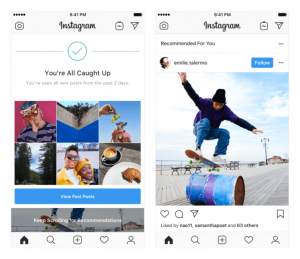If a black loading screen appeared on your living room TV between your television show and an advertisement, you’d think something was wrong. But it is unwelcomely expected when it comes to viewing video on mobile devices. While this “waiting period” happens on your mobile device regularly, it doesn’t have to. Given the intimacy and utility of mobile devices and rising consumer expectations for high-quality experiences, providing high-quality TV-like video experiences across all devices and operating systems is becoming a necessity. In the past, this was a complex problem, but the good news is, it’s becoming a lot easier. Today, brands can seamlessly deliver cross-platform, high-quality video experiences with ad-insertion.
Many leading brands are taking an innovative, hybrid approach to ad-insertion that allows marketers to reach every mobile device. To understand how this approach works, it’s helpful to understand the background of video delivery and ad-insertion technologies.
Client-side Ad Insertion
In the early days of online video, the only way to play video on devices (which were mostly PCs at that time) was to build software primarily on a Flash player that would play on the device. Marketers could then use software to inject ads into the video and manage the entire video experience. “Client-side” software – an application running on a user device – would communicate with various advertising servers to determine which video made sense to play. After the advertisement ran, Flash loaded a set video to play, and the resulting lag in communication between server produced that familiar spinning/loading wheel between the ad and the content. For years, this method was an advertiser’s only option. If you were able to deliver smooth pre-roll (ads before the content) delivery without annoying users, that was considered state of the art.
But once smartphones entered the market, the number of platforms that could run video proliferated. No longer was it enough to develop software for the PC or Mac platform, now brands had to code for iOS, Android, and various other operating systems and devices. (That complexity has only increased with time, as content now is delivered via Apple TV, Xbox, Amazon Fire, and myriad other platforms.) Because all of the new platforms didn’t support Flash (Steve Jobs’s firm stance that iOS would never run Flash being the most prominent example), marketers couldn’t reach users of non-Flash devices. It also meant marketers could not inject advertising on the mobile web, because that also didn’t support Flash.
The industry came up with a new mechanism: instead of delivering content via Flash, we wrote native code that replicated all of Flash’s functionality. But today, in order to solve the problem across all devices and platforms, software would have has to be built, tested, and maintained for each platform, and can, in some cases, be a costly and time-consuming undertaking.
The Move to the Server-Side
One solution to the proliferating device challenge is known as “server-side” ad insertion, which allows advertisers to deliver video content and the ad in a single stream to a device. Advertisers love this cloud-based technology because it provides the ability to reach any device with TV-like quality ads with the ability to bypass ad blockers. There’s no software required on the device – as long as the device can play back video in the cloud, you can combine advertisement and content to reach every device. But there are some things the server-side can’t do that are important to advertisers, including the ability to block “skip” bars, or enable interactive ads.
The Best of Both Worlds
To better meet the needs of today’s marketers, the industry is in need of a hybrid approach that incorporates the best of server-side and client-side technologies. It’s an approach that combines all of the reliability, quality, and platform ubiquity from the server-side with the user interactivity that comes with the software that lives on the client side. While much of this heavy lifting is done in the cloud on the server-side, the hybrid approach also delivers the right amount of software to manage the UI layer and offer users a great video experience.
What Hybrid Approach Means for Advertisers Moving Forward
As publishers move more and more content online, are advertisers keeping up? Due to the rise in cord cutters and cord-nevers, there’s an entire generation of kids growing up who don’t know what broadcast television is. If brands want to reach this market segment they need to focus advertising on the online and mobile channels they use. The hybrid approach provides a massive increase in advertisement inventory for brands coupled with the targeted capabilities of online advertising. This approach is advantageous for all brands.
Five years ago it would have been a daunting task to deliver a monetized television-like experience across all devices, but it’s easily achievable via server-side and client-side technologies. We can now deliver the right experience to the right user on every device in a cost-effective way.
Digital & Social Articles on Business 2 Community
(277)
Report Post




